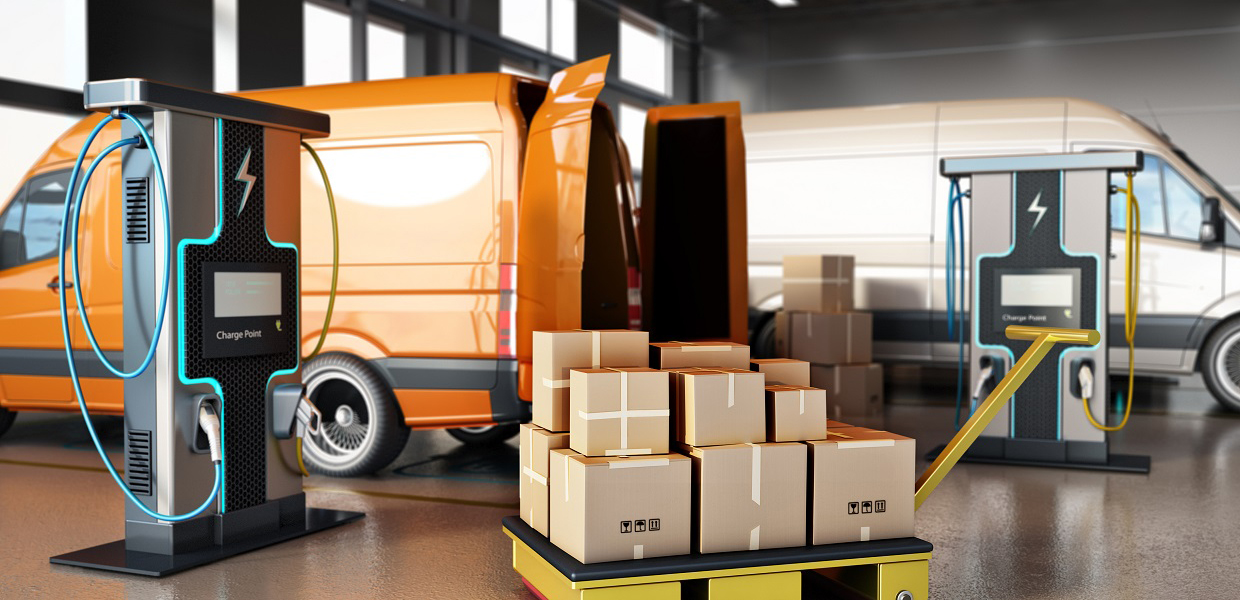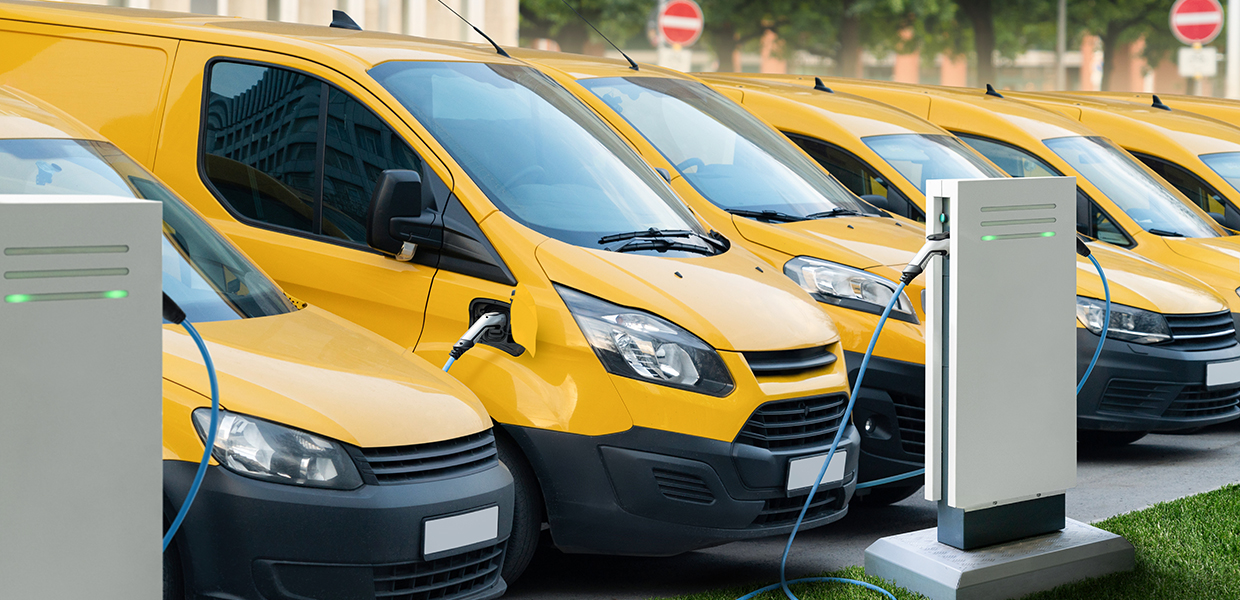As eMobility becomes increasingly integral to business operations, understanding the diverse applications of electric vehicles (EVs) and navigating the landscape effectively becomes crucial. DLL can help your business to unravel the complexities of EVs and find the right financing solution to fit your needs.
The world of EVs is rapidly evolving, reshaping the transportation, logistics, and supply chain industries. Switching to EVs is essential to meet global low carbon goals and reduce the estimated 24% of total CO2 emissions attributed to shipment transportation worldwide.
According to the IEA’s Global EV Outlook 2023, there are now nearly 840 current and announced medium- and heavy-duty vehicle models in the Global Drive to Zero Emission Technology Inventory (ZETI) database.
Road transport is responsible for approximately 12% of global greenhouse gas (GHG) emissions. As vehicles with internal combustion engines (ICE) are gradually being replaced by sustainable, energy-efficient EV alternatives, businesses can reduce their dependence on fossil fuels.
Why is eMobility important?
Encompassing electric vehicles, bikes, scooters and the charging infrastructure required to run them, eMobility is becoming increasingly prevalent in the transportation sector as it offers benefits for the environment, the economy, and society.
Firstly, eMobility aids in reducing greenhouse gas emissions and air pollution, which significantly impact climate change and public health. Additionally, it contributes to enhancing energy efficiency by enabling the use of electricity generated from renewable sources. Moreover, as sustainability becomes increasingly important to customers, implementation of EV fleets improves customer satisfaction and loyalty. Lastly, eMobility creates new opportunities and job prospects, necessitating the development of new skills, technologies, and services to support this evolving sector.
However, eMobility also faces several challenges. The substantial initial cost associated with EVs and installation of charging infrastructure often discourages potential customers and investors, while the insufficient availability of public charging stations poses limitations on the range and accessibility of EVs. The increased use of EVs also puts extra strain on an electricity network infrastructure that is not growing fast enough to support the increased demand for battery charging.
Therefore, eMobility requires a holistic and collaborative approach, involving various stakeholders, such as manufacturers, dealers, distributors, users, governments, and financiers.
Diverse EV applications across industries
EVs span various sectors within transportation, logistics, and supply chains, serving distinct purposes based on their type and size. Micro mobility encompasses small, nimble vehicles like electric bikes and scooters, ideal for short urban trips. These eco-friendly options provide convenient last-mile connectivity and can be shared among users, generating new business models.
In the realm of Light Commercial Vehicles (LCVs), including vans and minibuses, EVs facilitate the transportation of goods or passengers within or between cities. Their shift to electric power reduces operating costs, emissions, and noise levels, unlocking access to low-emission zones and incentives, particularly benefiting last-mile delivery services.
Trucks, handling long-distance bulk transport, constitute a significant source of emissions. Electrifying this segment could mitigate environmental impact, yet hurdles persist - high battery costs and weight, limited range and charging infrastructure, and navigating complex regulations hinder widespread adoption.
Regulations and subsidies for eMobility?
As eMobility becomes more prevalent and impactful, many countries have implemented various regulations and subsidies to encourage and support the adoption of EVs. These programs can help overcome some of the challenges and barriers that EVs face, such as the high upfront costs, the lack of infrastructure, and industry acceptance. You can read more about this in our blog, A short guide to regulations & subsidies for Last-Mile Delivery fleets: A path to electric vehicles.
DLL can help you navigate the EV landscape
DLL enables businesses to access eMobility equipment and technology to help them grow and create a positive impact by offering sustainable, tailored financing solutions, along with insights and advice, that drive smarter and more economical use of eMobility assets.
Some of the ways DLL can help with eMobility financing include:
- Tailored solutions: DLL can tailor a financing solution that meets your specific needs and goals, whether you are a manufacturer, dealer, distributor, or user of eMobility equipment. DLL can offer various financing options to suit your budget, cash flow, and risk profile.
- Expertise and experience: With extensive expertise and experience in various eMobility segments, such as micro mobility vehicles, electric light commercial vehicles, electric trucks, and charging infrastructure, DLL can provide you with insights and advice on best practices in the eMobility industry, as well as connect you with trusted vendors and partners.
- Subsidy and incentive support: DLL can help you access and benefit from the various subsidies and incentives available for eMobility in different markets and regions. We can advise you on the eligibility and application requirements, as well as integrate the subsidies and incentives into your financing solution.
The expertise to finance sustainable eMobility solutions
DLL has the experience and expertise to support our partners and customers in their transition towards reduced emissions. Tailored finance packages cover investment in new vehicles as well as associated costs like charging infrastructure and maintenance.
Our sophisticated, international view on asset costs, life cycles and associated residual values means we can offer flexible, up-to-date solutions including global master lease agreements spanning multiple countries, regions, brands, and asset types.
DLL also understands that flexibility remains crucial in all financing options, as sustainable transport and logistics solutions rapidly evolve, with businesses needing continued financial support to invest in new solutions as they emerge.
-(1).jpg?h=600&iar=0&w=1240&hash=FC3FF7ECB4AF291ED3EE45A33723DE31)

